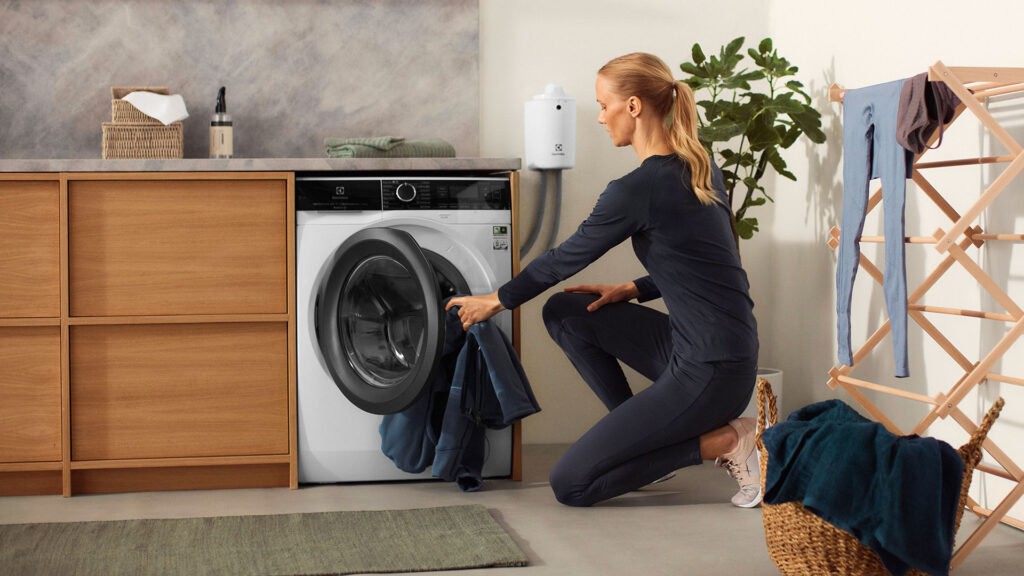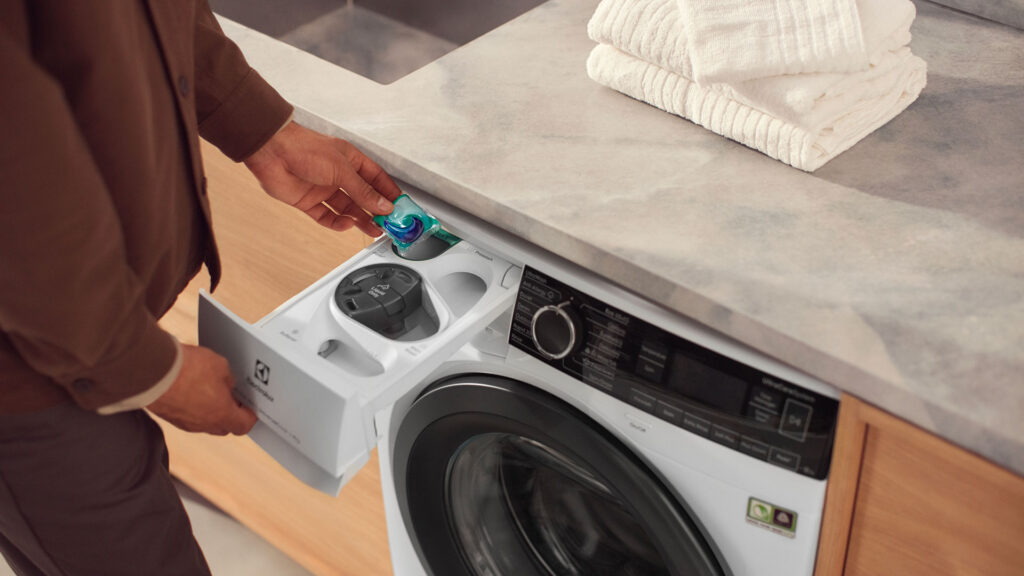How many clothes do you buy and throw away each year? Surely too much. Here are some tips to make your wardrobe last longer.
Ten uses: this is the average lifespan of a garment. After that, all of these clothes end up in the trash. A huge waste at the origin of vast landfills, as in the Atacama desert which receives every year no less than 39,000 tons of used clothes, which come to pollute this superb natural site.
How can this enormous waste be stemmed? Several solutions are possible to make your wardrobe a little more sustainable. Your morale and ultimately your savings will thank you.
Among them, there is obviously the choice of textiles, the change in our consumption habits, but also the choice of a high-performance washing machine that will protect your clothes and make them last a long time. Electrolux, the household appliance brand, is committed in this direction by developing products that optimize washing and take care of your clothes. Their goal ? Make sure your clothes last twice as long by 2030 using half the water. But to get there, everyone has to do their part.
Choose textiles that last
Choosing quality clothes carefully and taking care of them instead of buying hundreds at low prices is the secret to a wardrobe that lasts. This will avoid choosing materials derived from petrochemical derivatives such as polyester, nylon or elastane. Low in quality, they remain stable over time, but lose their original color very quickly, are not very breathable, and age quickly and badly. However, if you have acquired them recently, you can prolong their lifespan by taking special care when washing them.
In the list of textiles made from natural materials that age well, there is of course cotton. It is actually the protective envelope that surrounds the seeds of the plant. The resulting cotton yarn is strong and flexible. If you choose it well, it will deform little in the wash and pill little. Ideally, it is organic (it is often marked on the label), because cotton absorbs pesticides enormously. Consider this if the garment is in constant contact with your skin.
Linen is also one of the good students. Although it tends to warp slightly over time, it remains one of the most natural and durable materials in a wardrobe. Perfect for hot summers, it is very airy and light on the skin. It is also extremely strong and pills very little.
For winter, sheep’s wool is a perfect textile material. Natural insulation of the animal, it allows you to benefit from an impermeable layer between the cold outside and your body. It’s not for nothing that Scandinavians swear by woolen sweaters for their harsh winters.
Recycling old clothes can also help reduce waste. As evidenced by the recent collaboration between Electrolux and design duo Rave Review. They used the clothes abandoned in the Atacama Desert to create new ones. A strong symbol to alert public opinion to clothing waste.

Pay attention to finishes
The materials are important, but for a garment to last, it must also be well sewn. Because to resist the friction of your skin (or the washing machine), certain parts must be reinforced.

This is particularly the case for areas with high friction such as elbows, pockets, knees, crotch or collar. When buying a new garment, be particularly vigilant about the quality of the seams. Check that sensitive areas are doubled and that the fabric of the collar, especially on a T-shirt, is thicker.
Finally, note that many brands of sustainable and locally made clothing have emerged in recent years. They never have sales and charge higher prices than fast-fashion. But, they are committed to the quality and origin of the materials and have wash cycle tests to verify the durability of their products.
A clean dressing room
And if you think chafing only happens on the skin, think again, it also happens in your closet when it’s jam-packed. Stacked on top of each other, the clothes then deteriorate more quickly.
To remedy this, an airy dressing room and a reasonable amount of clothing remain the best solution. It’s a two-in-one solution. Fewer clothes, better quality, is the guarantee of a minimalist and airy wardrobe.

The opportunity to redo your closet and bet on timeless quality clothes. A nice shirt, quality jeans, a well-cut T-shirt in a good material or even a mid-season jacket, a plain dress, but made for your body type. In short, choose clothes in which you feel good for good.
How to properly wash a garment?
But once this quality dressing is made, you still have to take care of it. To do this, you must wash your clothes correctly, at the right frequency and at the right temperature.

The big maintenance secret is on a postage stamp, the labels of your clothes. Our advice is obvious: read them and follow them. Your washing machine has about ten different washing programs and like everyone else, you only use two or three of them.
A few tips though:
- The most delicate fabrics such as wool require short programs, below 35 degrees, and a minimum spin, not going beyond 400 revolutions per minute.
- Drying must be done flat and in the open air to ensure that the fiber does not shrink, thus transforming your comfortable sweater oversized in cropped top size 8 years.
- Cotton garments are less demanding. Not very sensitive to high temperatures, they are also more tolerant of more intensive spin cycles.
In general, we recommend, for all clothes whose washing is not dictated by a strict protocol, to favor short cycles (30 minutes maximum), low spin cycles (800 revolutions per minute), and temperatures low (cold wash being the most highly recommended).

Washing jeans, on the other hand, is another matter. Contrary to popular belief, it is not recommended to wash your jeans after a day of wearing them. The CEO of Levi’s shocked the world by saying so a few years ago.
Know that the maintenance of our jeans is a subject of eternal debate. According to some scientists, on the other hand, it should be machine washed after 4 to 6 days of consecutive wear. Not less. We will also avoid washing it at too high a temperature. Washing at 30 degrees is more than enough. And going through the dryer is strongly discouraged.
Choosing the right washing machine and cycle for clothes
Reading the labels is important, knowing the programs of your washing machine is better. Especially since today, many manufacturers are integrating new washing technologies into their products. Smarter, and therefore more economical, your washing machine is an essential component of the durability of your clothes.

The manufacturer Electrolux is well aware of its role in this maintenance chain.
The brand, in addition to offering high-performance machines, is also committed to a process of raising user awareness of good practices to make clothes last (filling the drum for washing, preferring liquid detergent which contains fewer abrasive and less wash your clothes).
To complete this message and help users reduce their textile waste, it has integrated some remarkable cycles and technologies into its latest machines, designed to take care of laundry and make it last as long as possible. Among them are:
- A new drum design for your washing machine. Called Care Drum (“a drum that takes care of”), it helps to absorb the shock of the clothes which, following the various washing cycles, are thrown against the drum.
- ColourCare is a water softening system that will demineralize it to remove Calcium ions in particular, responsible for limescale deposits on your clothes.
- SteamCare which creates water vapor like your iron. As a result, the clothes are less wrinkled when they leave the machine, and it is no longer necessarily necessary to iron them afterwards.
- Microplastic Filter allows during each cycle to filter the plastic particles rejected by the synthetic clothes. For example, it avoids the rejection of the equivalent of two garbage bags of plastic microparticles per year.
- UniversalDose finally, there is a specific detergent compartment, integrating a location for each type of detergent. The machine thus adapts its cycle according to the type of detergent present in the compartment. For example, for detergent capsules, your washing machine will know to send powerful jets of water to pierce the capsule and release as much detergent as possible into your laundry, even if you are washing cold. The option also saves washing time, as the capsule is disintegrated in a very short time.
In the end, taking care of your clothes isn’t very complex, but it’s a whole mode of consumption that needs to be rethought. Choosing them well, washing them correctly so that they last a long time, and choosing a washing machine equipped with advanced programs will allow you to keep your wardrobe for a long time, and reduce your ecological impact in the long term.
